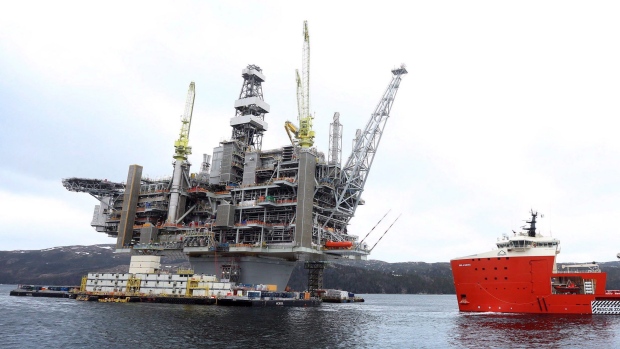Aug 30, 2018
Eastern Canada is finding new (non-U.S.) customers for its oil
, Bloomberg News

Canada is finding new customers for its Newfoundland oil.
For years, large volumes of oil produced off Canada’s eastern coast were shipped to U.S. refiners. But booming U.S. output has cut the demand from nearby refineries. Newfoundland’s oil exports to countries other than the U.S. are already up 59 per cent compared to all of last year, totaling almost 23 million barrels, according to data compiled by Bloomberg. The number of non-U.S. recipients has grown to 14 countries from just 6.
That means crude from Newfoundland is ending up in places like Croatia for the first time. With sanctions on Iran’s oil looming and ship fuel regulations set to make the province’s crude more attractive, the number of new customers may continue to grow.
The declining price of U.S. benchmark crude relative to international prices -- which Newfoundland uses -- has spurred more East Coast refiners to look for shale, according to Gerry Goobie, general manager for marketing and transportation at Canada Hibernia Holding Corp., a government-owned company that has an 8.5 per cent interest in Newfoundland’s Hibernia field.
“Newfoundland crude sellers would need to find other buyers,” Goobie said by phone. “That’s why it’s going further afield."
As the province moves forward with plans to double production by 2030, Newfoundland oil has made its way as far north as Norway and as far east as China. Croatia is set to become the newest customer.
The ship Minerva Clara is en route to Omisalj on Croatia’s southern coast after loading at Newfoundland’s Whiffen Head crude terminal on Aug. 18, according to ship tracking data compiled by Bloomberg. INA Industrija Nafte DD owns the Mediterranean nation’s only operating refinery in Rijeka near the port of Omisalj. It will be INA’s first purchase of Canadian crude, according to a person familiar with the matter.
A looming cap on sulfur emissions for ship fuels may also spur new customers. “This is a market opportunity for heavy, sweet crude in Newfoundland,” said Allan Fogwill, chief executive officer of the Canadian Energy Research Institute.
U.S. sanctions on Iran and Venezuela’s chronic production issues could also mean more interest for Eastern Canada’s barrels despite the difference in qualities. Buyers looking to replace those sour crudes are likely to try the heavy to medium sweet Newfoundland oil given its proximity in quality even though it won’t be an exact replacement. That might open up additional markets in Europe for Newfoundland.
--With assistance from Jasmina Kuzmanovic


